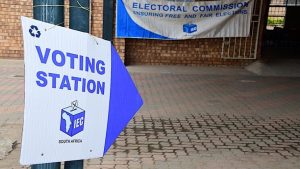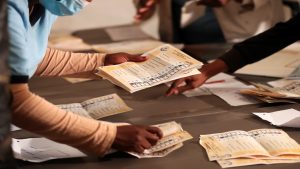The Election Monitoring Network has called on the Electoral Commission (IEC) of South Africa to ensure fairness in the order that political parties appear on the ballot paper.
Specialists in the voting mechanics have for decades studied whether the order in which voters see candidates on the ballot paper can influence the election results.
The network’s policy analyst and researcher Nkosikhulule Nyembezi says the top candidate on the ballot paper usually gets gratuitous votes from undecided voters.
The IEC uses a method known as the toss to ensure that there is fairness to all political parties.
Nyembezi explains how the IEC arranges for a toss: “It puts numbers, let’s say if there are thirty parties – it puts thirty numbers in a bowl and then the political parties take a toss and then the party that gets a number one gets that first spot on the ballot box. Then thereafter it follows the alphabetic numbering.”
The IEC cites the notion of monitoring elections as a crucial role in ensuring that elections are transparent, free and fair, and that the outcome is accepted by voters, political parties and candidates.
Also, according to the United Nations, election monitoring and observation is a valuable tool for improving the quality of elections, as it helps build confidence in the honesty of electoral processes. Monitoring of elections can lead to the correction of errors or weak practices, even while an election process is still under way.






